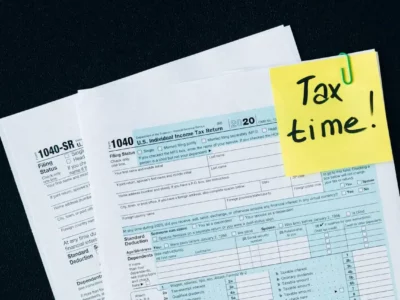
In the property market, short-term rentals and long-term rentals offer a variety of opportunities and challenges for landlords and tenants alike. In this article, we will explore the key differences and make a comparison between short-term rentals vs long-term rentals, highlighting their advantages and disadvantages. It will help you determine which of these options best suits your needs and goals. Additionally, we will discuss legal aspects and market trends that affect both options in Spain.
Introduction to Short-term and Long-term Rentals
In the current property market in Spain, it is crucial to understand the differences between short-term rentals and long-term rentals. The Introduction to short-term rentals shows how this option focuses on short-term profitability, attracting visitors and tourists to specific locations. On the other hand, the Introduction to long-term rentals involves long-term contracts, offering stability and predictability to landlords.
Both types of rentals serve distinct purposes. Short-term rentals can be beneficial for those looking to maximise income during peak seasons, while long-term rentals are ideal for those who prefer consistent income and stronger ties with tenants. The rental comparison between these two formats is essential for making an informed decision about which type of rental best fits your goals.
| Aspect | Short-term Rental | Long-term Rental |
|---|---|---|
| Contract duration | Short term (daily/weekly) | Long term (monthly/yearly) |
| Income | Potentially higher during peak seasons | Stable monthly income |
| Responsibilities | Frequent maintenance and customer service | Less daily management required |
| Tenant profile | Tourists and temporary travellers | Long-term tenants |
Definition of Short-term Rental
Short-term rental refers to the temporary leasing of properties offered to tourists and visitors. This option allows landlords to maximise the use of their real estate, as it can be more profitable than a traditional lease. Below, we will explore the characteristics of short-term rentals and the various types of properties you might consider.
Main Characteristics of Short-term Rental
Among the characteristics of short-term rentals, flexibility in lease terms stands out. Landlords can decide when and how to rent their property, adjusting to high and low tourism seasons. Moreover, the possibility of decorating and furnishing attractively is essential to attract temporary tenants. Online booking management becomes a fundamental aspect, facilitating organisation and increasing visibility.
Types of Available Properties
There are various types of properties available in the short-term rental market. From city centre apartments to rural homes located in natural settings, each property has its own appeal. Villas offer additional luxury and are ideal for large groups, while rooms in residences can be an economical and convenient option for individual travellers. Each option adapts to different tourist preferences and budgets, allowing landlords to diversify their offerings.
Definition of Long-term Rental
Long-term rental refers to the practice of leasing properties for extended periods, typically ranging from six months to several years. In this mode, tenants sign lease contracts that set the terms and conditions of occupation, creating a more stable relationship between landlord and tenant. This form of rental represents a significant alternative to short-term rentals, distinguished by its focus on stability and security derived from long-term agreements.
Characteristics of Long-term Rental
The characteristics of long-term rentals include several crucial elements that differentiate it from other types of leasing. On one side, tenants often enjoy a secure monthly income, which is beneficial for landlords’ financial planning. Additionally, the lower turnover of tenants contributes to easier property management, allowing landlords to focus on long-term maintenance instead of constantly seeking new tenants.
Types of Contracts and Duration
The lease contracts in long-term rentals can vary in duration and conditions, providing some flexibility for both parties. Annual contracts are common, though there are also options for shorter terms, provided both parties agree. It is essential to understand the rights and responsibilities in these agreements, as they clearly establish the guidelines that will govern throughout the duration of the contract, ensuring a fair and lawful lease.
Advantages of Short-term Rentals
Short-term rentals offer various advantages that make them an attractive option for landlords and investors. The combination of short-term profitability and flexibility in management allows landlords to make the most of their properties efficiently.
Short-term Profitability
One of the main advantages of short-term rentals lies in the short-term profitability. During high seasons, nightly income can double or triple compared to a traditional lease. This additional income provides an immediate cash flow, which is extremely beneficial for those looking to quickly reap benefits from their investment.
Flexibility in Property Management
The flexibility in management is another standout feature. With short-term rentals, you can decide when and how to make your property available. This ability to adapt to market demands and adjust prices according to the season offers landlords unprecedented control. You can close the property for personal use during specific times and generate income when the market allows.
Increased Online Visibility
Increased online visibility is crucial in the realm of short-term rentals. Booking platforms allow landlords to promote their properties to a global audience. This massive reach facilitates attracting visitors and the possibility of establishing dynamic rates adjusted to demand. The more visible your property, the higher the likelihood of securing consistent bookings.
Disadvantages of Short-term Rentals
Despite the opportunities that short-term rentals can provide, it is essential to consider the disadvantages that may arise when managing this type of property. There are challenges that can affect both the profitability and the stability of your long-term investment.
Local Regulations and Standards
One of the most complicated aspects of short-term rentals is the strict rental regulations that vary from one locality to another. Many cities have implemented specific legislation to control the expansion of short-term rentals. This includes the need to obtain licenses, comply with safety codes, and limit the duration of stays. Not adapting to these regulations can result in significant fines or even a prohibition on operating.
Constant Maintenance and Cleaning
The property maintenance in a short-term rental environment requires constant and meticulous effort. Guests have high expectations regarding cleanliness and the general state of the property. This often translates into the need for regular maintenance and thorough cleaning between each booking, increasing operational costs. Failing to meet these demands can jeopardise your ratings and, consequently, your income.
Advantages of Long-term Rentals
Long-term rentals present themselves as a viable option for those looking to generate consistent income with a relatively low level of effort. This mode not only ensures a revenue stream but also offers several advantages that distinguish it in the competitive property market.
Monthly Income Stability
One of the main advantages of long-term rentals lies in the stability of monthly income it provides. Landlords can count on a predictable income, given that contracts are usually long-term. This simplifies financial planning and allows landlords to better manage their expenses and economic expectations.
Less Daily Management Required
Compared to short-term rentals, long-term rentals require less intense management. With tenants who typically stay on the property for extended periods, maintenance and cleaning tasks are significantly reduced. This reduced administrative burden is particularly attractive for those looking to invest in properties without committing too much time and effort to their management.
Disadvantages of Long-term Rentals
Although long-term rentals offer certain advantages, they are not without disadvantages. These disadvantages can impact both landlords and tenants, creating certain difficulties in the leasing process. This model faces challenges ranging from effectively finding tenants to limitations in the use of the property.
Difficulties in Finding Tenants
One of the main tenant difficulties faces is the competitiveness in the traditional rental market. At times, it can be challenging to attract potential tenants, especially in areas where other landlords offer more attractive conditions. This can lead to the property remaining vacant for a considerable period, affecting the regular income of the landlord.
Less Flexibility in Property Use
Another aspect to consider is the restrictions on property use flexibility. When opting for traditional rental, the landlord may be forced to forego accessing the property during the duration of the contract. This can result in a lack of options for using the property for personal or leisure purposes, thus limiting the landlord’s ability to enjoy their property when they wish.
Short-term Rentals vs. Long-term Rentals: Income Comparison
The income comparison between short-term and long-term rentals is a relevant topic for those looking to invest in properties. There are several factors that influence income in the tourism sector, as well as the profitability of each rental mode. Analysing these elements can help you make more informed decisions about your investment.
Factors Influencing Tourism Income
The income generated through short-term rentals depends on multiple factors. Some of the most notable include:
- Property location: Central or tourist areas tend to attract more bookings.
- Time of year: During holidays or special events, rental prices are usually higher.
- Property type: Apartments, villas, or luxury homes can offer different levels of profitability.
Analysis of Profitability
The profitability analysis between short-term and long-term rentals reveals significant differences. Short-term rentals can provide higher income in the short term, while traditional rentals are characterised by stable and predictable earnings. Below is a table that summarises these elements:
| Type of Rental | Average Monthly Income | Income Stability |
|---|---|---|
| Short-term | €2000 | Variable |
| Traditional | €1200 | Stable |
This information can help you better evaluate the option that best matches your profitability expectations and property management needs. Thus, you can make more accurate decisions based on your particular situation.
Impact of Short-term Rentals on the Property Market
Short-term rentals have notably transformed the Spanish property market, affecting both property demand and pricing dynamics in various localities. As this type of rental becomes more popular, many landlords are choosing this model over traditional rentals, which leads to significant changes in the supply and availability of housing.
Change in Property Demand
The growing popularity of short-term rentals has led to an increase in property demand in areas with high tourist potential. This phenomenon means that more landlords see a profitable opportunity in the short-term rental market, changing the way properties are used. Some of the main features of this change include:
- Increased interest in areas with tourist influx.
- Preference for one-bedroom apartments and properties close to popular attractions.
- Reduction in housing availability for local residents, as many properties are transformed into short-term rentals.
Influence on Rental Prices
The impact of short-term rentals has led to a notable increase in rental prices in many regions. As a result, both traditional tenants and landlords must adapt to this new reality. Some highlights include:
| Area | Traditional Rental Average Price (€) | Tourist Rental Average Price (€) |
|---|---|---|
| Barcelona | €1,200 | €2,300 |
| Madrid | €1,100 | €2,000 |
| Valencia | €800 | €1,500 |
This increase in prices affects the accessibility of housing for residents, leaving a debate about the sustainability of the short-term rental model in the future.
Legal Considerations in Spain
When exploring the world of rentals in Spain, it is essential to consider the legal considerations that affect both short-term and traditional rentals. These rules provide a framework to ensure that both landlords and tenants comply with their rights and obligations. In this regard, understanding the specific regulations is essential to avoid legal issues in the future.
Rules for Short-term Rentals
The rules for short-term rentals may vary depending on the autonomous community, but they generally include obtaining a specific license, limiting the number of rental days, and even the obligation to register guests. Additionally, tax regulations require that income generated by this type of rental be adequately declared, which involves maintaining a clear record of all transactions.
Requirements for Traditional Rentals
On the other hand, traditional rentals are also subject to regulations that seek to protect both landlords and tenants. The requirements for traditional rentals include formalising a contract that specifies the conditions of the lease, such as duration, rent amount, and maintenance responsibilities. Knowing these legal considerations for rentals will help you establish clear and fair relationships with your tenants, ensuring a smoother rental process.




